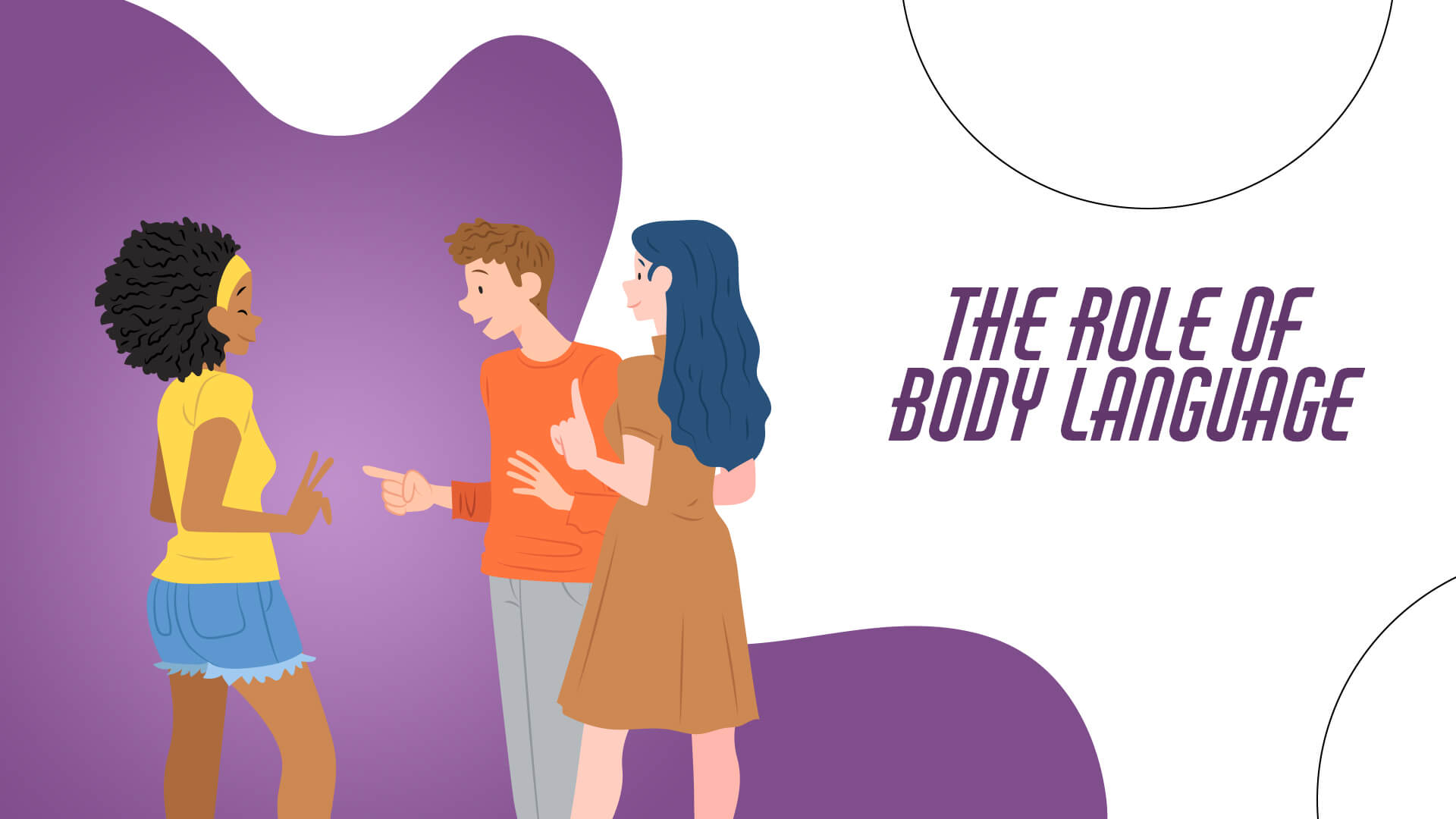The Role of Body Language in Speaking




“Words aren't the only thing that matters!”
When it comes to mastering the art of communication, body language plays a crucial role in how effectively we convey our message, especially when speaking in any second language. Whether you're a student trying to ace a presentation or a parent looking to improve your spoken any second language, understanding the importance of body language can boost your confidence and help you communicate more effectively.
Body language refers to the non-verbal cues we use to express ourselves, such as gestures, facial expressions, posture, and eye contact. Research shows that up to 93% of communication is non-verbal, meaning that what you say is often less important than how you say it. This makes body language a key component of confident speaking.
A confident speaker uses body language to reinforce their message. For example, maintaining eye contact with your audience shows that you're engaged and trustworthy, while good posture can make you appear more authoritative and credible.
When learning to speak any language fluently, body language can either enhance or hinder your ability to communicate. Many learners focus solely on grammar and vocabulary, overlooking the impact of non-verbal communication. However, integrating body language into your spoken practice can make your speech more natural and relatable.
Consider this:
Imagine a student giving a presentation in English. They may have memorized their script perfectly, but if they're slouching, avoiding eye contact, and fidgeting nervously, their audience may perceive them as unsure and unprepared. On the other hand, a student who stands tall, uses hand gestures to emphasize points and maintains eye contact is likely to be seen as confident and competent.
Techniques to Improve Body Language in Communication
To enhance your body language and become a more confident speaker, consider the following tips:
To give you a better understanding of the impact body language can have on communication, let’s look at some data:
| Communication Aspect | Percentage of Impact |
| Verbal Communication (Words) | 7% |
| Verbal Communication (Words) | 38% |
| Non-verbal communication (Body Language) | 55% |
As the table shows, body language accounts for a significant portion of how your message is received. This is why focusing on your non-verbal cues can make a big difference in how you communicate
Mirror Practice: Stand in front of a mirror and give a short speech. Focus on your eye contact, posture, and hand gestures. This will help you become more aware of your body language.
Video Feedback: Record yourself during a practice session and review it. Notice any habits that may detract from your speech and work on correcting them.
Role-Playing: Practice with a friend or family member by taking turns playing different roles, such as the speaker and the listener. This can help you become more comfortable with using body language in real-time situations.
Incorporating body language into your language learning routine can drastically improve your ability to communicate confidently. Whether you're practicing in front of a mirror, with a friend, or in a language learning class, pay attention to how you use your body to reinforce your words. By combining strong verbal skills with effective non-verbal communication, you'll be well on your way to mastering speaking.
So, as you continue your journey to communicate, remember that how you say something is just as important as what you say. Mastering body language will not only help you in language learning classes but will also make you a more effective communicator in all aspects of life. Isn’t that quite a good thing
Body language is crucial because it complements your words, making your communication more effective and engaging. It helps convey confidence, clarity, and intent, which are essential when communicating in English, especially in spoken English classes or public speaking situations.
You can improve your body language by practicing in front of a mirror, recording your speeches to observe your gestures and posture, and getting feedback from others. Focus on maintaining eye contact, using appropriate hand gestures, and keeping an upright posture.
Yes, good body language can enhance your learning experience in online English classes. Being attentive, nodding, and maintaining eye contact with the camera can make you appear more engaged and help you get better feedback from teachers.
Common mistakes include avoiding eye contact, slouching, crossing your arms, and using too many or too few hand gestures. These can make you appear nervous, disinterested, or less confident.
While some aspects of body language, like smiling or nodding, are generally universal, others can vary across cultures. It's important to be aware of cultural differences, especially if you're communicating in English with people from diverse backgrounds.